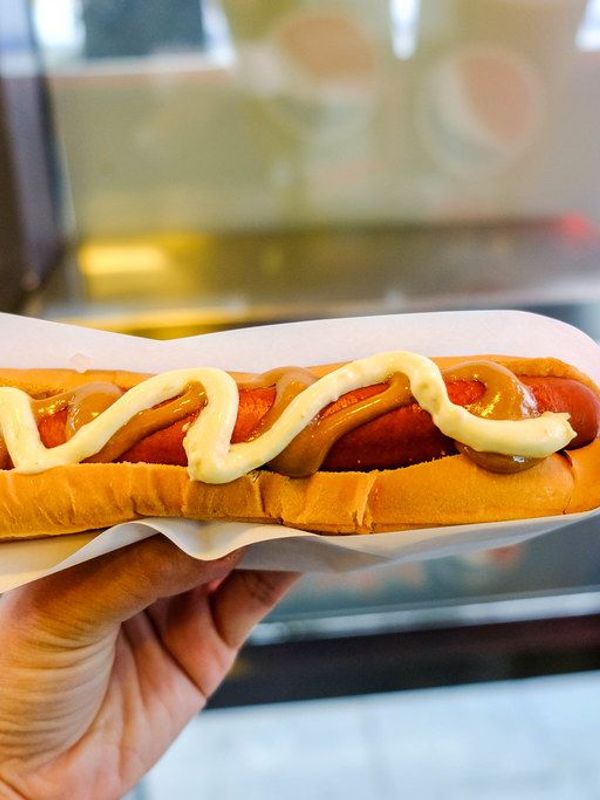
Icelandic Food: 14 Traditional Dishes to Dive Into Iceland's Cuisine
For all of the people who are flocking to Morocco or France for a culinary experience, we have something to tell you. Iceland is now taking over the culinary world. The Icelandic food scene has exploded from Michelin Star Chefs to delicious farm-to-table restaurants. All of these amazing places have one thing in common: traditional Icelandic food. Some feature it directly on the menu, while others infuse it and take it to the next level.
Either way, Iceland provides some of the freshest locally sourced ingredients. Let’s go over what falls in the Traditional Icelandic Food category and how it became a tradition. Prepare to have a growling stomach and a plane ticket suddenly booked for Iceland after you are done reading about these unique and mouth-watering dishes.
History of Icelandic Food
Before we get into the tasty, strange, and sometimes wild foods Iceland offers, it helps to know a little about their history. Icelandic food comes from the Scandinavian countries nearby. When settlers arrived in the 9th century, they brought their Nordic traditions with them. Early Icelanders survived by farming just enough to feed their families, with little extra to sell. Then, the Ice Age hit, and farming became tough. Things didn’t improve until the 19th century when farming started up again.
Around this time, Danish culture had a big influence on Iceland, and you can still taste it in some dishes today. By the 20th century, fishing became the backbone of the economy, and fish became Iceland’s main food. These days, Iceland’s farmers raise healthy, hormone-free livestock and grow fresh vegetables, while fishermen keep bringing in top-quality fish from the sea. Now that you know the background let’s dig into the traditional – and sometimes unusual – Icelandic foods that are still popular today.
1. Fish & Seafood
Iceland’s fish and seafood scene is as fresh as it gets, thanks to the island’s rich waters. Fishing has been a cornerstone of Icelandic life since the first settlers arrived, relying on the ocean, lakes, and rivers for sustenance. Today, Atlantic cod remains the star of the show, playing a vital role in the country’s economy since the 19th century. You’ll often find cod seared with lemon or served in hearty stews across traditional Icelandic menus.
Other local favorites include haddock, prized for its flaky texture and versatility, with chefs often preparing it with creative twists like curry and pineapple. Icelandic lobster, or humar, is a delicacy reserved for special occasions, typically served with butter, lemon, and breadcrumbs. Plokkfiskur, a classic fish stew made from cod or haddock, potatoes, onions, and spices, is a beloved comfort dish that reflects Iceland’s resourceful culinary roots, ensuring no good food goes to waste.
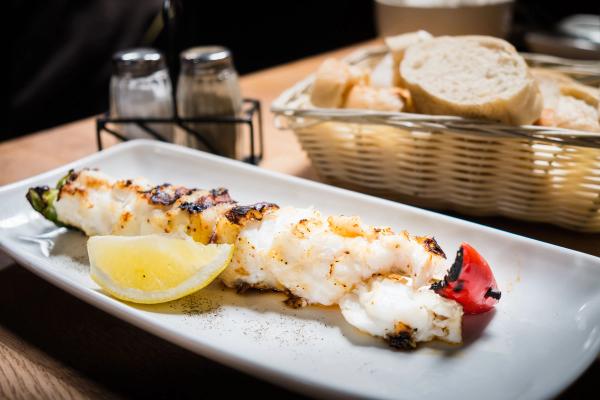
2. Pylsa
Iceland’s hot dogs, or pylsa, are a must-try for visitors. Unlike the typical processed hot dogs found elsewhere, Icelandic pylsur (sausages) are made primarily from grass-fed, hormone-free lamb, with some pork and beef mixed in. This gives them a unique flavor you won’t find anywhere else. The lamb comes from free-range sheep raised by local farmers, roaming the vast Icelandic countryside. The result? A fresh, high-quality hot dog that stands out from the crowd.
The toppings elevate pylsa to the next level. A traditional Icelandic hot dog is served with raw white onions, crispy fried onions, ketchup, sweet brown mustard (pylsusinnep), and remoulade – a creamy sauce made with mayo, mustard, capers, and herbs. All of this is nestled in a steamed bun, though some places will grill the bun if you ask. For the full experience, order it “ein með öllu” – one with everything. The most famous spot to grab one is Bæjarins Beztu Pylsur in downtown Reykjavik, a stand that’s been serving locals and celebrities alike since 1937. If you’re on the road, N1 gas stations are another great place to try this Icelandic favorite.
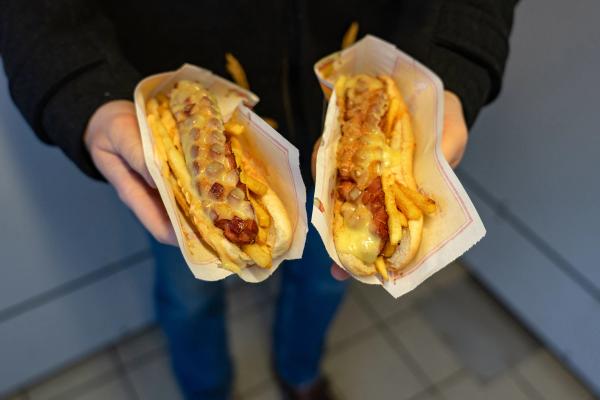
3. Svið
Svið is one of Iceland’s more unusual traditional dishes – a boiled sheep’s head, cut in half with the brain removed and usually served with mashed turnips or potatoes. It might sound strange, but there’s a good reason it became part of Icelandic cuisine. Back in the day, nothing went to waste, so Icelanders found a way to use every part of the animal. Svið became a staple in þorramatur, a mid-winter buffet of Icelandic foods that you can still try at festivals today.
If you’re up for trying it, svið is full of interesting textures and flavors. The cheek is the easiest place to start – it tastes like regular mutton. The tongue is a bit firmer, and if you’re feeling brave, the eyeball offers a surprising pop when you bite into it. At festivals, svið is often served with other old-school Icelandic treats like blood pudding, fermented shark, and even ram testicles. It’s definitely not your average buffet, but it’s a fun way to experience Iceland’s Viking roots.
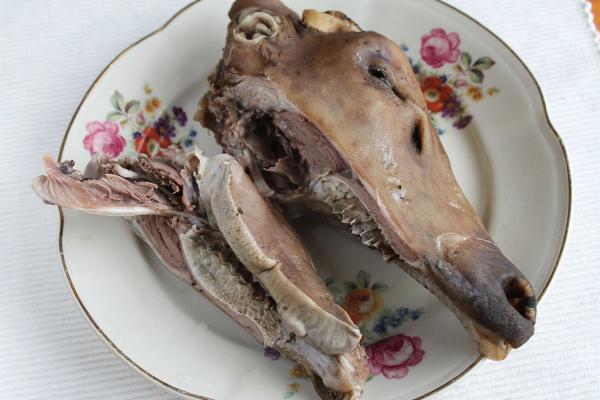
4. Hákarl
Hákarl is one of Iceland’s most famous (and notorious) traditional foods, and it's considered the country's national dish. It’s fermented shark, usually from Greenland or sleeper sharks. The shark goes through a months-long fermentation process, where it’s buried and then hung to dry for four to five months. This removes the toxins that make the meat unsafe to eat raw. The result is a dish with a strong ammonia smell that’s not for the faint of heart. It’s often called “rotten shark,” but don’t worry – it’s safe to eat once properly prepared. That said, it’s definitely an acquired taste!
The flavor of hákarl varies depending on the part of the shark you try. The body meat has a soft, almost cheese-like texture, while the belly is chewier with a stronger bite. Some say it tastes fishy and mild at first but then shifts to something like blue cheese with a hint of sweetness or nuttiness. Others describe the aftertaste as similar to urine – but despite its reputation, hákarl is considered a delicacy in Iceland, often served during holidays or special gatherings. If you’re curious, the best place to try it is Bjarnarhöfn Shark Museum on Snæfellsnes Peninsula, where you can learn about the process and sample some.
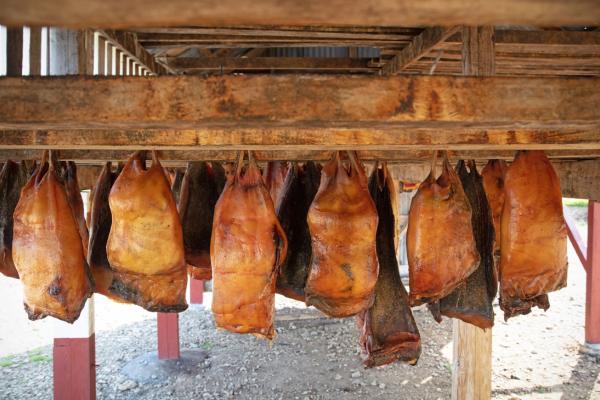
5. Kleina
Kleina is a popular Icelandic snack – a twisted donut that’s been around since the 14th century in Denmark. Back then, people didn’t have ovens, so these donuts were cooked on stovetops for holidays and special events. While other Scandinavian countries like Denmark and Norway also make kleina, Iceland’s version is bigger and not as sweet. They’re deep-fried until golden and have become a go-to treat for celebrations or just as a tasty everyday snack.
The recipe has been passed down through generations, often called a “Grandmother’s Recipe.” Kleina is made with simple ingredients like yogurt or milk, cardamom, nutmeg, and baking powder, skipping fancy stuff like butter or extra sugar. You can find fresh kleina at bakeries all over Iceland, with Bernhoftsbakari in Reykjavik being one of the best places to try them. They’re light, crispy, and hard to stop eating – so don’t be surprised if you end up grabbing more than one!
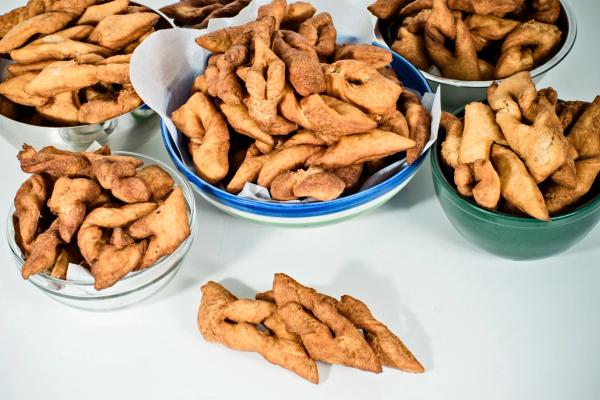
6. Skyr
Skyr is Iceland’s version of yogurt – thick, creamy, and full of protein. You might have seen it in stores in the U.S. and Europe, but it’s been part of Icelandic life for over 1,000 years. What makes Skyr stand out? It takes almost four cups of milk to make just one cup, giving it a rich, smooth texture that’s way thicker than regular yogurt. Icelanders have been making it the same way for generations, using special cultures passed down over time.
Skyr is made by heating milk to just the right temperature, then adding traditional cultures to turn it into the thick, tasty snack Iceland is known for. It’s packed with protein and has no artificial flavors, colors, or preservatives. A single cup can have up to 17 grams of protein, and it usually has less sugar than most yogurts. If you're visiting Iceland, you’ll find skyr everywhere – in gas stations, grocery stores, and roadside stops – making it an easy and delicious snack to grab on the go.
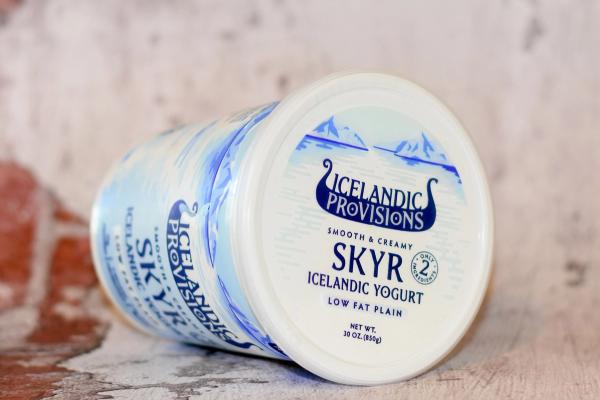
7. Kjötsúpa
Kjötsúpa, or Icelandic lamb soup, is a simple and hearty dish that’s been around since the 900s, thanks to Norse settlers. Sheep were a big part of survival, providing food and warmth. The settlers used every part of the animal, and lamb soup became a regular meal that’s still enjoyed today.
The soup is full of flavor, made with lamb (including bone cuts), potatoes, carrots, onions, and rutabaga, along with fresh herbs. Some people add rice or oatmeal to make it thicker, while others toss in leeks or cabbage. A spoonful of sour milk on top gives it a nice finish. You can buy lamb cuts at grocery stores to make it at home – bones add extra flavor. But if cooking isn’t your thing, you’ll find kjötsúpa on restaurant menus, at festivals, and even in gas stations. It’s the perfect hot meal for cold fall or winter days.
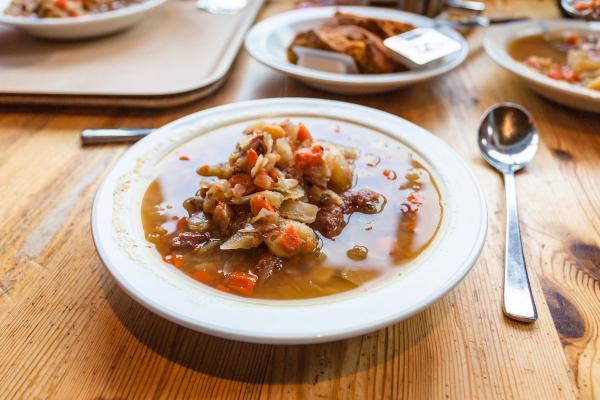
8. Puffin
Puffin is one of Iceland’s more unusual dishes, right up there with fermented shark. These cute seabirds are popular for bird watching, but they’ve also been part of Icelandic cooking for centuries. Puffin is especially common in the Westman Islands, where the country’s largest puffin colony lives. While eating puffin can be a bit controversial today, it was once a survival food when there weren’t many other options.
Puffins used to be hunted out of necessity, but now they’re protected in many places – though not everywhere in Iceland. Hunting is banned in South, West, and East Iceland, but it is still allowed up north. Most Icelanders don’t eat puffin, either because they want to protect the birds or because the meat can be tough and gamey. When served, it’s usually smoked like pastrami or broiled, giving it a taste similar to liver. It’s a dish that gets mixed reactions, but it’s still part of Iceland’s food history.
9. Flatkökur
Flatkökur, Iceland’s traditional flatbread, is a simple and tasty part of the country’s food scene that’s been around since the 9th century. Early Icelanders had to get creative, even using moss to replace grain when resources were low. The bread was first cooked on hot stones over fire embers, then on heavy pans, and now on stovetops at home. Flatkökur is still a favorite snack or side dish for people of all ages in Iceland.
The bread is made with simple ingredients – wheat, rye flour, baking powder, salt, and boiling water. The dough is rolled out, cut into pieces, and cooked on the stove until it’s dry with a little char. Flatkökur is usually topped with butter, mutton pâté, smoked lamb (hangikjöt), or pickled herring. You can buy it in stores, but homemade flatkökur is thicker and has more flavor. If you want to try the real thing, Café Loki in Reykjavik serves fresh flatbread with great views of the cathedral – a cozy spot for a quick bite.
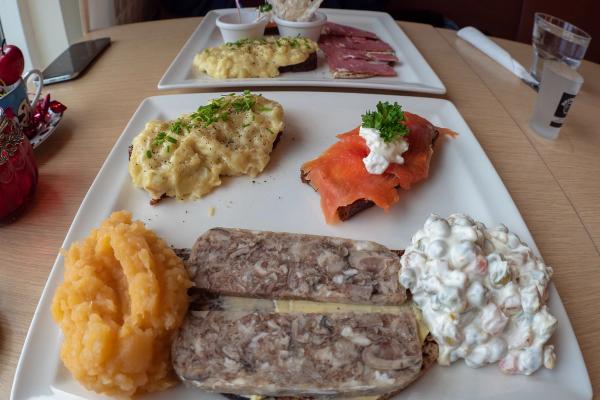
10. Ice Cream
Icelanders love ice cream – and not just in the summer. They eat it all year, even in the middle of winter. It’s such a big deal that people have ice cream as often as others drink coffee or tea. And honestly, it makes sense! There are many different kinds to try and plenty of places to get it.
One of the most popular treats is bragðarefur – basically a fancier version of a McFlurry. People usually mix in Oreos, Daim, or Mars bars. Daim is a crunchy caramel chocolate bar from Sweden and Norway. You can find bragðarefur at most ice cream shops in Iceland, so it’s worth a try. Soft serve is another favorite, and most people prefer one of two brands – Emmessís or Kjörís. Icelanders are pretty loyal to their favorite brand – kind of like picking between Pepsi and Coke.
Dipped ice cream is another fun option. Shops dip the cone into warm chocolate that hardens into a crunchy shell. You can pick different kinds of chocolate, or if dipping isn’t your thing, just load up on toppings. Icelandic ice cream shops have everything from licorice and Snickers to Rice Krispies and nuts. You can even dip it and add toppings if you’re feeling fancy. One of the best places to grab ice cream is Eldur og Ís in Reykjavik. They’re known for ice cream and crepes, and Nutella is their specialty. If you like sweets, this place is hard to beat!
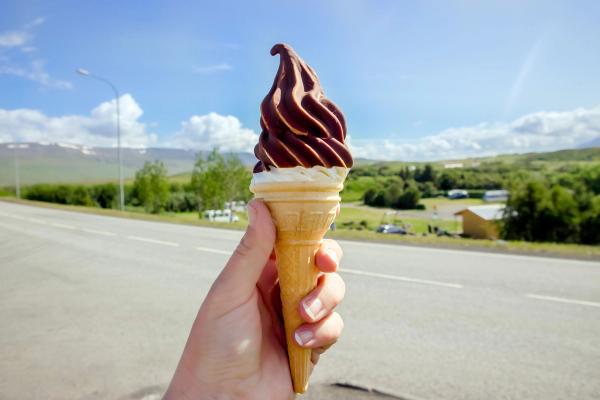
11. Hardfiskur
Hardfiskur, or dried fish, is a simple and popular Icelandic snack – kind of like Iceland’s version of beef jerky. It’s packed with protein and nutrients, making it a great snack when you’re hungry. It’s usually made from haddock, cod, or wolffish, but sometimes you’ll find dried Atlantic char. It’s filling, tasty, and a good source of protein, just like eggs.
Making hardfiskur is pretty easy. The fish is cleaned, gutted, and covered in salt, then hung outside to dry in cool weather. Some people dip it in brine to add more flavor. Once it’s dried, the fish is beaten with a mallet to make it flaky. Many people like to add butter – because butter makes everything taste better. You can find hardfiskur in most grocery stores and gas stations around Iceland. Just don’t open it in the car – the smell is strong, and your road trip buddies probably won’t love it!
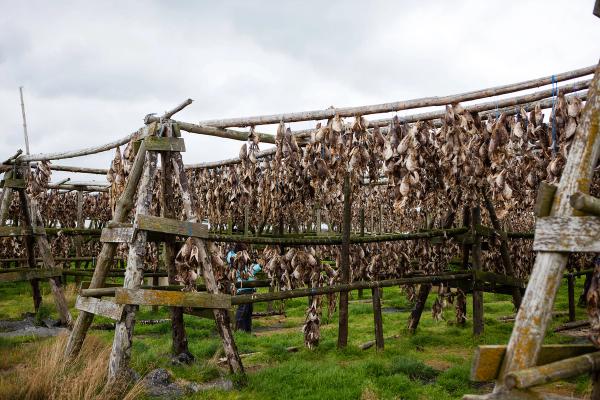
12. Hangikjöt
Hangikjöt, or "hung meat," is a classic Icelandic dish that’s a big part of Christmas celebrations. The name comes from the old way of smoking lamb or mutton by hanging it in a smokehouse. This method has been used for ages to help preserve meat during Iceland’s long winters. The smoking is usually done with birch wood or sometimes dried sheep dung – which sounds weird but actually gives the lamb a rich, smoky flavor that’s hard to beat. The end result is tender, tasty meat that’s a holiday favorite for many Icelandic families.
Hangikjöt is usually served with simple but hearty sides that make the meal even better. You’ll often see it with potatoes in a creamy sauce, green peas, and pickled red cabbage. Some people also add flatbread or rye bread to the plate. Hangikjöt is more than just something to eat – it’s part of Iceland’s holiday traditions and something people look forward to every year. If you’re in Iceland during winter, trying hangikjöt is a great way to enjoy the country’s food and culture.
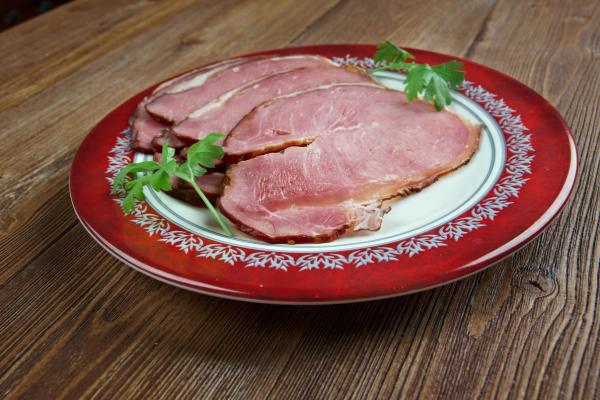
13. Licorice
Licorice, or "lakkrís" in Icelandic, isn’t just candy – it’s a big part of life in Iceland. You’ll find it in all kinds of sweets, ice cream, and even drinks. One of the most popular combos is licorice and chocolate, which might sound a little odd if you haven’t tried it, but Icelanders love it. It’s sweet, a little salty, and has a flavor that people in Iceland can’t get enough of.
Licorice became popular in Iceland because there weren’t many sweets to choose from in the past. Since imports were limited, licorice was one of the few treats people could get, and it eventually became a favorite. It wasn’t just for snacking either – pharmacists used it to help with coughs and colds. These days, you’ll find licorice in treats like Draumur (chocolate with soft licorice inside), Þristur (fudge with licorice pieces), and Djúpur (licorice balls covered in candy and chocolate). There are even licorice schnapps like Opal and Tópas, or homemade versions where people soak licorice in vodka. Licorice might not be for everyone, but in Iceland, it’s everywhere.
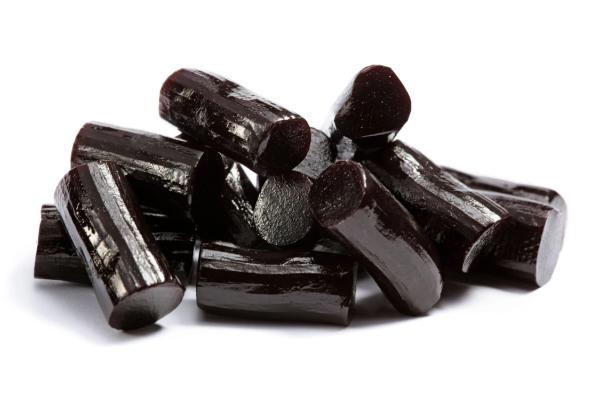
14. Þorramatur
Þorramatur is a traditional Icelandic spread of preserved meats and fish, usually eaten during the mid-winter festival, Þorrablót. It started when Icelanders had to find ways to make food last through long winters. Dishes like fermented shark (kæstur hákarl), ram’s testicles (súrsaðir hrútspungar), and boiled sheep’s head (svið) might sound a little strange, but they’re proof of how Icelanders used everything they had. The meal usually comes with rye bread (rúgbrauð), mashed turnips, and a shot of Brennivín schnapps. Þorrablót isn’t just about the food – it’s a way for Icelanders to celebrate their history and keep old traditions going.
These festivals have become popular again, and now you can find Þorramatur at restaurants and events all over Iceland during Þorri. In Reykjavik, places like Café Loki and Þrír Frakkar serve these dishes, letting locals and visitors try something new. Grocery stores even sell trays of Þorramatur so you can enjoy it at home.
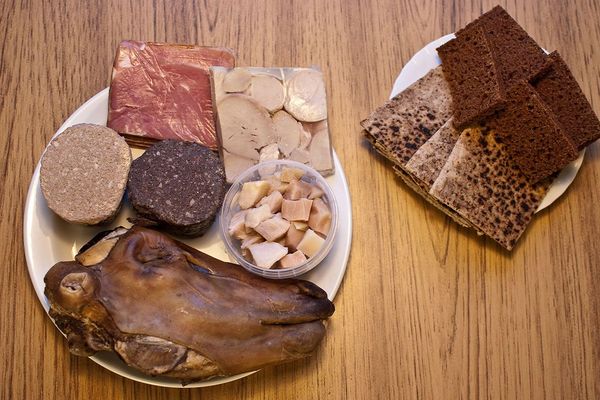
Conclusion
There are truly so many options for visitors to try traditional Icelandic food. Indulge in the classics or get weird with some of the specialty dishes. From hearty fish stews to lamb hot dogs, there is something for every foodie. We know that a lot of the dishes are focused on fish and meat. So, Vegans may be a little apprehensive about traveling to Iceland; Don’t be! We have a list of restaurants and dishes for you on our Vegan In Iceland Blog. Come try the Iceland culinary scene for yourself. You and your tastebuds will not be disappointed.
Disclaimer: The author and Go Car Rental Iceland are not promoting any abuse of animals & mammals or illegal hunting. Everything in this article is for educational purposes as well as researched recommendations.
